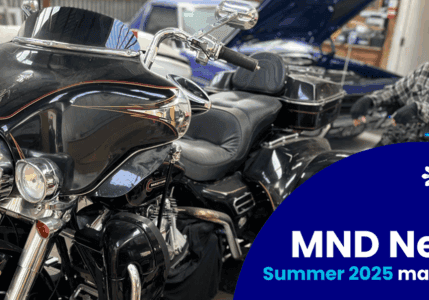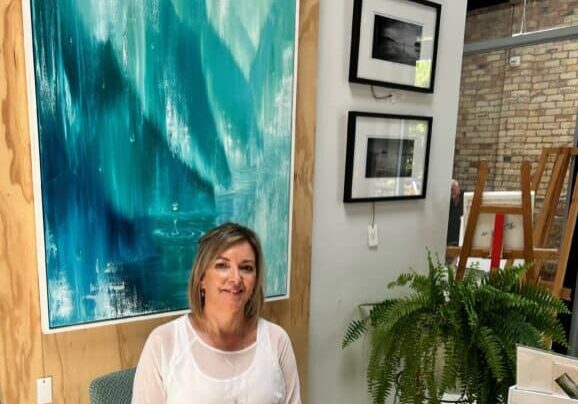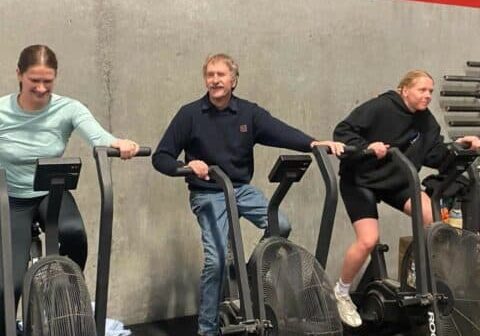A journey of car modification, mobility, and mindset
Community, Fundraising, Living with MND, Personal Stories
10 June 2025
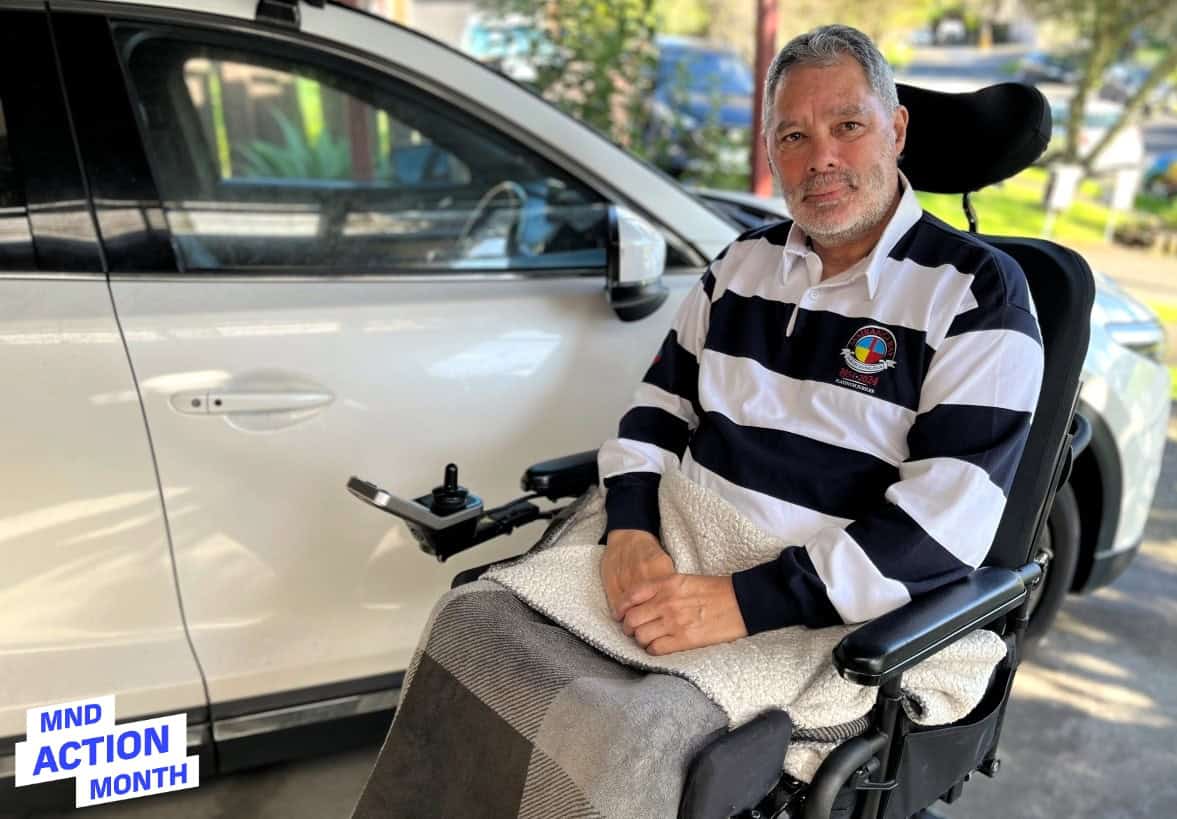
Michael Brown—known to most as Mike or “Browno”—has always met life head-on. Sporty by nature and community-minded at heart, he's spent years in the surf and on the diamond. As Event Water Safety Manager with Surf Lifesaving New Zealand, Mike shares how he adapted to life with MND, modified his car to retain mobility and independence, and why he hopes it can now help someone else just starting their journey. His story is one of several being shared throughout MND Action Month to highlight the strength, insight, and determination of people living with MND.
Mike, 62, has always been driven to stay active and involved. A former regional and national softball and baseball representative, keen golfer, and longtime Surf Lifesaving servant and employee, Mike spent much of his life on the move—working, competing, and giving back to his community. But in recent years, that movement has come with increasing challenges. Now living with progressive muscular atrophy (PMA), a rare form of motor neurone disease (MND), Mike is looking to pass on something that gave him back a measure of freedom when he needed it most: his modified Mazda CX-9.
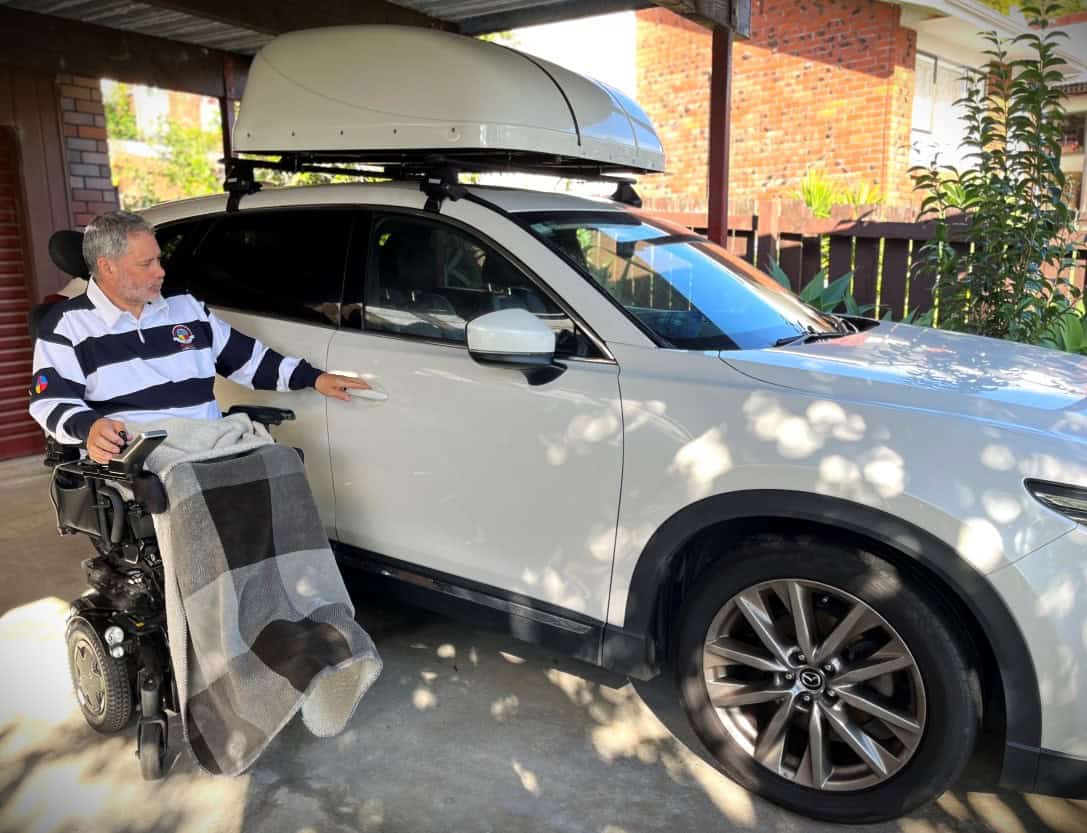
The vehicle has two key modifications: Sure Grip FeatherLite Push/Rock driver hand controls and a BraunAbility Chair Topper, a roof-mounted manual wheelchair carrier. Both were installed and maintained by Milner Mobility. Mike believes the car could be of real value to someone new in their MND journey.
“It would be a huge shame to just sell it on the open market,” he says. “I want it to go to someone who can really benefit. The challenge is finding someone who realises the need and understands the benefit.”
From diagnosis to drive
“You never think something like this is going to happen to you,” Mike says of his MND diagnosis. “I thought I was just getting older, a bit stiffer from the surf and the years of running and sliding into fixed bases. But something kept niggling at me. That gut feeling doesn't lie.”
Mike was diagnosed with PMA in 2021, though the early signs began on the beach during a Surf Lifesaving event. Initially brushing off muscle fatigue as overexertion, the symptoms returned repeatedly until he eventually sought specialist help. The journey to diagnosis was a long 9-month period, from doctor to multiple specialists and an array of MRI scans and nerve tests. The diagnosis from his neurologist came as a shock, but also with a kind of clarity.
“My neurologist told me to take a month, speak to my kids, make a bucket list and for us all to come back with any and all questions,” Mike recalls. These were the toughest conversations he has ever had to initiate.
He managed to speak to his two boys, albeit separately, but found it hard to do so with his daughter. He brought all three children into the journey from the start, ensuring they were, and still are, a part of each step. “One of my sons said he would come as support, and that he’d sit quietly at the next appointment, as it turned out, they both asked more questions than me.”
Since then, Mike has continued working as Event Water Safety Manager for Surf Life Saving New Zealand, though increasing mobility challenges have led him to work from home.
Making mobility work
The turning point came one day while driving. Mike lifted his foot to brake—and nothing happened. “The car just kept going forward,” he says. That near-miss led him, via a close and good friend, to Milner Mobility, where he learned about hand controls.
“If I’d known about them earlier, I would have got them even without MND,” he says. “They’re unbelievably easy to use,” he says. Mike found they gave him back a sense of freedom and independence that he hadn’t realised he’d lost.

Soon after came the Chair Topper—a motorised sealed roof box that stores and retrieves a manual wheelchair with the push of a button. It freed Mike from having to rely on others to load and unload his wheelchair. “I’d pull up somewhere, and people would stop to ask about it. I became a bit of an unofficial ambassador,” he laughs.
Lessons and letting go
“Mobility isn't just about getting from A to B,” Mike says. “It's about holding on to your rhythm—your ability to get out of the house, see people, feel like yourself.”
He remembers being overwhelmed in the early days, unsure of what modifications would actually work or whether they’d be worth the investment. “That’s where asking questions is vital. My MND NZ Support Advisor and the team at Milner made a real difference. But I had to take the first step.”
Though the car brought back a sense of autonomy, Mike has reached the point where getting in and out has become too difficult. “It now takes time, I require assistance, and it depletes my limited energy levels.”
Mike acknowledges the incredible support he’s received along the way—from whānau, friends, MND NZ staff, to occupational therapists and medical specialists. He’s grateful for their guidance and expertise and encourages others to listen to their recommendations and, importantly, to adopt them early.
“It’s very easily stated in hindsight,” he reflects, “but it really can make life easier before it gets harder. That’s where asking questions is vital. The team at Milner made a real difference. But I had to take the first step.”

He now uses a power wheelchair and accessible transport. “The condition stops me, but it doesn’t define me,” he says. Still, parting with the car is bittersweet.
“Ideally, I don’t want it to go to someone who strips it back. I made those modifications for independence. The hand controls are so intuitive, and the Chair Topper changed how I moved.”
He offers this advice to others considering mobility modifications: “Don’t wait. Life with MND is going to get more difficult—so make it as easy as you can, as soon as you can.”
Still moving forward
Mike admits that asking for help is one of the hardest lessons he’s had to learn. “I’m someone who offers, not asks. But I’m getting better at it.” He still jokes his way through most things—telling people he stores himself in the Chair Topper, folding himself inside it like a contortionist.
Through it all, he’s holding tight to his independence, even as his world changes shape. “I adapt, and then it changes. I readapt, and then it changes again. That’s just the way it is.”
As Mike puts it: “There’s no instruction manual for this. You’ve just got to stay one step ahead—and laugh whenever you can.”
Anyone interested in learning more about Mike’s vehicle can email .
